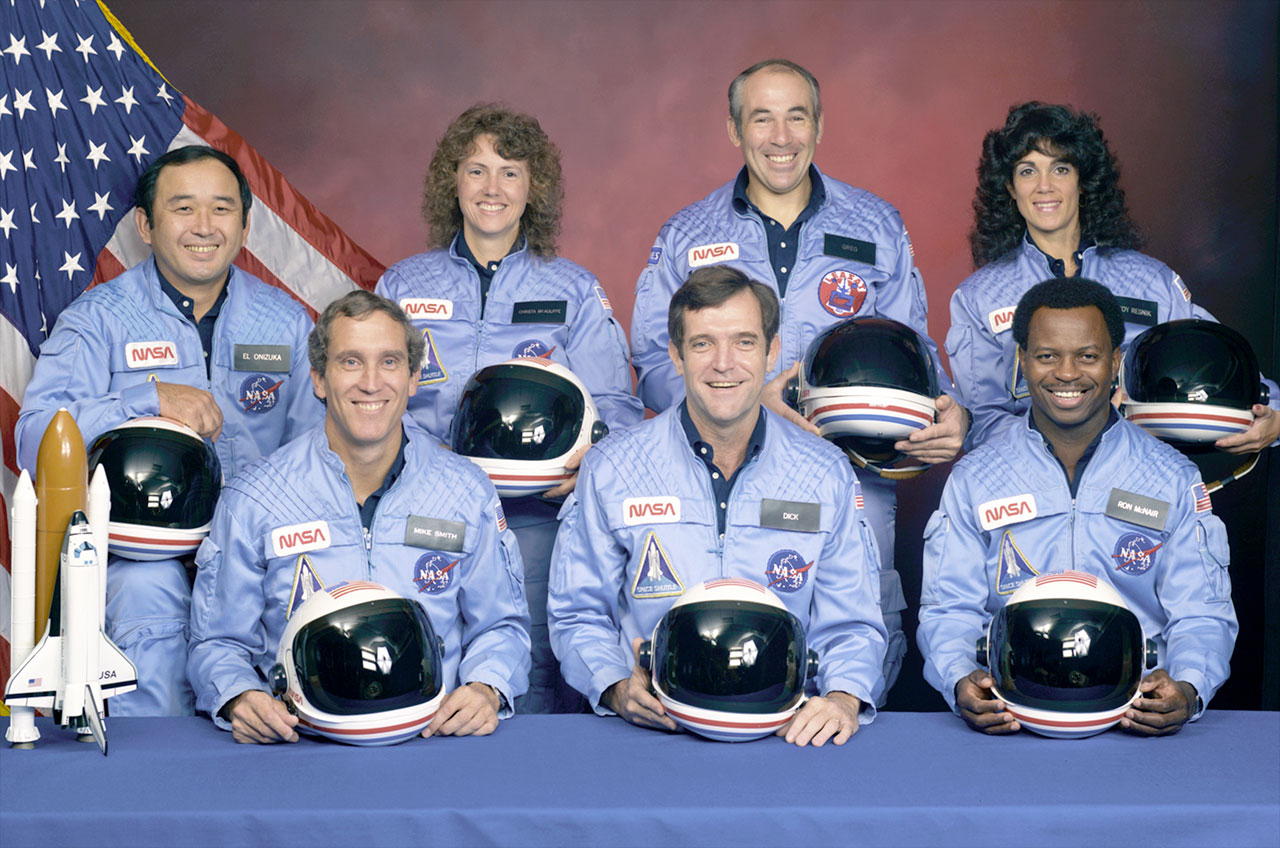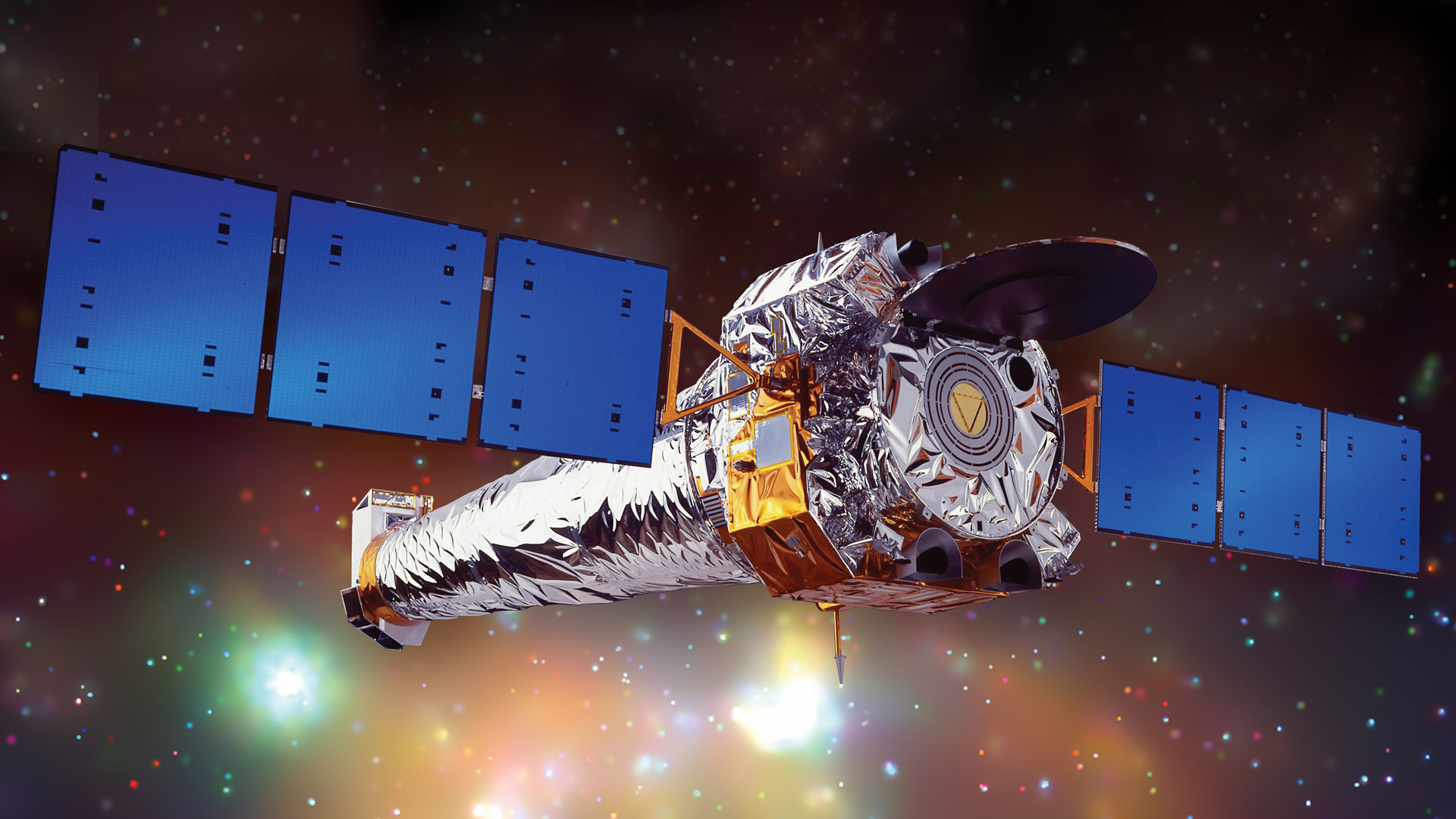
NASA's storied space shuttle program experienced extraordinary triumphs and heartbreaking tragedies during its 30-year history.
We reflect on the most memorable missions of this groundbreaking era.
First shuttle flight: STS-1 (Columbia)
On April 12, 1981, NASA's inaugural space shuttle flight launched astronauts John Young and Bob Crippen aboard Columbia, marking a new chapter in space exploration.
The mission introduced several historic milestones: the first use of solid rocket engines to propel a spacecraft into orbit, the gliding runway landing of a spacecraft, and the first crewed test flight of a new space vehicle. Despite a few minor anomalies, Columbia's maiden voyage was an engineering triumph and set the stage for future missions.
A shuttle lands at White Sands: STS-3 (Columbia)
On March 22, 1982, Columbia's third mission tested critical systems like the Canadarm robotic arm and thermal protection shielding. Unusually high winds at Edwards Air Force Base forced an iconic landing at the White Sands Test Facility in New Mexico.
This marked the only shuttle landing at White Sands.
First American woman in space: STS-7 (Challenger)
The launch of Challenger on June 18, 1983, marked a pivotal milestone: Sally Ride became the first American woman in space, 20 years after Soviet cosmonaut Valentina Tereshkova.
Led by commander Bob Crippen, the STS-7 crew successfully deployed two telecommunications satellites for Canada and Indonesia. This mission also introduced the largest crew (five astronauts) to fly together at the time.
First African-American astronaut reaches space: STS-8 (Challenger)
The next mission, STS-8, saw Guion Bluford become the first African-American in space, launching aboard Challenger on Aug. 30, 1983. The mission also marked the shuttle program's first night launch and landing and included the deployment of an Indian communication satellite and a series of experiments. They also tested the Canadarm on a dummy second payload.
Shuttle fleet's Spacelab debut: STS-9 (Columbia)
On Nov. 28, 1983, Columbia introduced Spacelab, a pioneering science laboratory housed in the shuttle's cargo bay. During this 10-day mission, the six-person crew collaborated with the European Space Agency to conduct experiments that demonstrated the shuttle's potential as a science platform.
Spacelab became a cornerstone of 22 subsequent shuttle missions, lasting until April 1998.
First untethered spacewalk: STS-41B (Challenger)
In February 1984, Challenger astronauts Bruce McCandless and Robert Stewart achieved a first in space exploration: untethered spacewalks using the Manned Maneuvering Unit (MMU). The MMU was a robotic backpack with its own thrusters that allowed the spaceflyers to move around, becoming the first human satellites to orbit Earth.
This mission also marked the first time a space shuttle landed back where it launched, at NASA's Kennedy Space Center in Cape Canaveral, Fla.
A satellite repair shop: STS-41C (Challenger)
On April 6, 1984, Challenger became a trailblazer in satellite servicing, repairing the malfunctioning Solar Maximum Mission satellite (SolarMax). The spacecraft had been launched in 1980 to study solar flares.
Astronauts used the Canadarm and conducted spacewalks to replace critical components, extending SolarMax’s lifespan. This mission laid the groundwork for iconic servicing efforts, including those for the Hubble Space Telescope.
First space shuttle disaster: STS-51L (Challenger)

On Jan. 28, 1986, NASA's space shuttle program saw its darkest day at the time, when seven astronauts lost their lives as Challenger disintegrated shortly after launch. One of them was high school teacher Christa McAuliffe, who had been selected to be the first teacher in space.
The problem began with exceptionally cold weather, which prevented a rubber O-ring on one of the shuttle's solid rocket boosters from maintaining its seal, allowing hot gas to leak and damage the shuttle's external fuel tank and the hardware attaching the booster to the vehicle.
The right solid rocket booster separated from the shuttle, and the fuel tank broke apart, causing the orbiter to be torn apart by aerodynamic stresses.
It would take two years of investigations and modifications before a NASA space shuttle flew into space again.
Read more: The lessons learned from the fatal Challenger shuttle disaster echo at NASA more than 35 years on
Shuttle fleet's return-to-flight mission: STS-26 (Discovery)
Discovery returned NASA to space on Sept. 29, 1988, with the STS-26 mission. This flight deployed a satellite and implemented new safety measures to prevent another tragedy.
Launching the Hubble Space Telescope: STS-31 (Discovery)
On April 24, 1990, Discovery launched the Hubble Space Telescope, providing humanity with unprecedented views of the cosmos.
Discovery's five-astronaut crew, led by commander Loren Shriver, spent five days in space deploying the observatory and conducting science experiments. Because of its vantage point in space, beyond Earth's blurring atmosphere, Hubble could take much more detailed photos than comparable ground telescopes.
However, soon after the telescope started snapping pictures, scientists realized that an error in the construction of Hubble's main mirror was significantly compromising image quality, causing pictures to come out blurry. Luckily, Hubble is the only telescope designed to be serviced in space by astronauts.
Read more: Over 30 years ago, astronauts saved the Hubble Space Telescope
First three-person spacewalk: STS-49 (Endeavour)
On May 13, 1992, during the maiden voyage of the space shuttle Endeavour, a trio of astronauts conducted the first-ever spacewalk involving more than two participants.
STS-49 mission specialists Pierre Thuot, Richard Hieb, and Thomas Akers performed this historic extravehicular activity (EVA) to capture and repair the stranded Intelsat VI-F3 satellite, which had been stuck in the wrong orbit since its 1990 launch. The astronauts successfully attached a new second-stage rocket, boosting the satellite into its intended geosynchronous orbit.
Fixing Hubble: STS-61 (Endeavour)
Three years after Hubble launched with faulty optics, NASA launched space shuttle Endeavour on the landmark STS-61 mission on Dec. 2, 1993. The mission followed the completion of corrective optics designed to resolve the telescope’s image-blurring issue.
The seven-astronaut crew, led by commander Richard Covey, performed five spacewalks to install the new hardware. The upgrades proved to be a resounding success, transforming Hubble into one of history’s most significant scientific instruments. Four additional Hubble servicing missions would follow, ensuring its continued contributions to astronomy.
Space shuttle docks at Russia's Mir: STS-71 (Atlantis)
While the U.S. and Russia began the space race as competitors, they evolved into collaborators. A key moment in this partnership came on June 27, 1995, when space shuttle Atlantis docked with the Russian space station Mir.
During this historic STS-71 mission, Atlantis delivered two cosmonauts to Mir for an extended stay and retrieved NASA astronaut Norm Thagard along with two other cosmonauts, marking the first shuttle exchange of station crew.
Shuttle launches oldest astronaut: STS-95 (Discovery)
On Oct. 29, 1998, space shuttle Discovery carried 77-year-old John Glenn, the oldest shuttle astronaut, back into space. Glenn, an original Mercury 7 astronaut and the first American to orbit Earth had previously flown on Friendship 7 in 1962.
The STS-95 mission included scientific studies on aging, space physiology, and materials science, making it a milestone in understanding how spaceflight impacts older individuals.
Shuttle's first International Space Station trek: STS-88 (Endeavour)
On Dec. 4, 1998, space shuttle Endeavour became the first shuttle to visit the International Space Station (ISS), carrying the American-built Unity module. Unity was joined to the Russian Zarya module, which had been launched weeks earlier by a Proton rocket, marking the official start of ISS assembly.
The mission highlighted the shuttle’s unique ability to transport large, complex station components, paving the way for future ISS construction missions.
Unlocking the X-ray universe: STS-93 (Columbia)

On July 23, 1999, space shuttle Columbia carried the Chandra X-ray Observatory into orbit, enabling astronomers to observe high-energy regions of the universe with unprecedented clarity.
The mission, commanded by Eileen Collins — NASA's first female shuttle commander — faced a near-critical challenge when a hydrogen leak threatened liftoff. Despite this, the crew successfully deployed Chandra, which has since provided invaluable insights into phenomena like black holes, galaxy clusters, and supernova remnants.
Read more: What it takes to keep NASA's flagship Chandra observatory flying for a quarter century
Columbia is lost: STS-107 (Columbia)

The tragic loss of the Space Shuttle Columbia on Feb. 1, 2003, brought a devastating end to its 16-day science mission. The crew, led by commander Rick Husband, conducted microgravity and Earth science experiments before the orbiter broke apart during reentry.
Investigators determined that a piece of foam insulation had struck the shuttle’s left wing during launch, causing critical damage that ultimately led to the disaster. The tragedy reshaped NASA’s approach to shuttle safety and marked a turning point for the program.
Read more: Columbia Disaster: What happened and what NASA learned
NASA shuttles resume spaceflights: STS-114 (Discovery)
On July 26, 2005, after two years of investigation and reform, Discovery’s STS-114 mission marked the shuttle program’s return to flight following the Columbia disaster.
Led by commander Eileen Collins, the mission tested new safety protocols, including detailed heat shield inspections using a sensor-equipped robotic arm. The crew also conducted heat shield repair tests during spacewalks, setting a new standard for shuttle operations.
The Last Shuttle Mission: STS-135 (Atlantis)
The final chapter of NASA’s shuttle program unfolded in 2011, with Atlantis launching on STS-135 on July 8. The mission carried four astronauts and a cargo bay filled with spare parts and supplies to the ISS.
Atlantis' journey capped off the shuttle era, following Discovery’s final flight in February and Endeavour's in May. After the last missions, NASA's fleet of three orbiters was retired to American museums, symbolizing the end of a historic program that spanned three decades.







